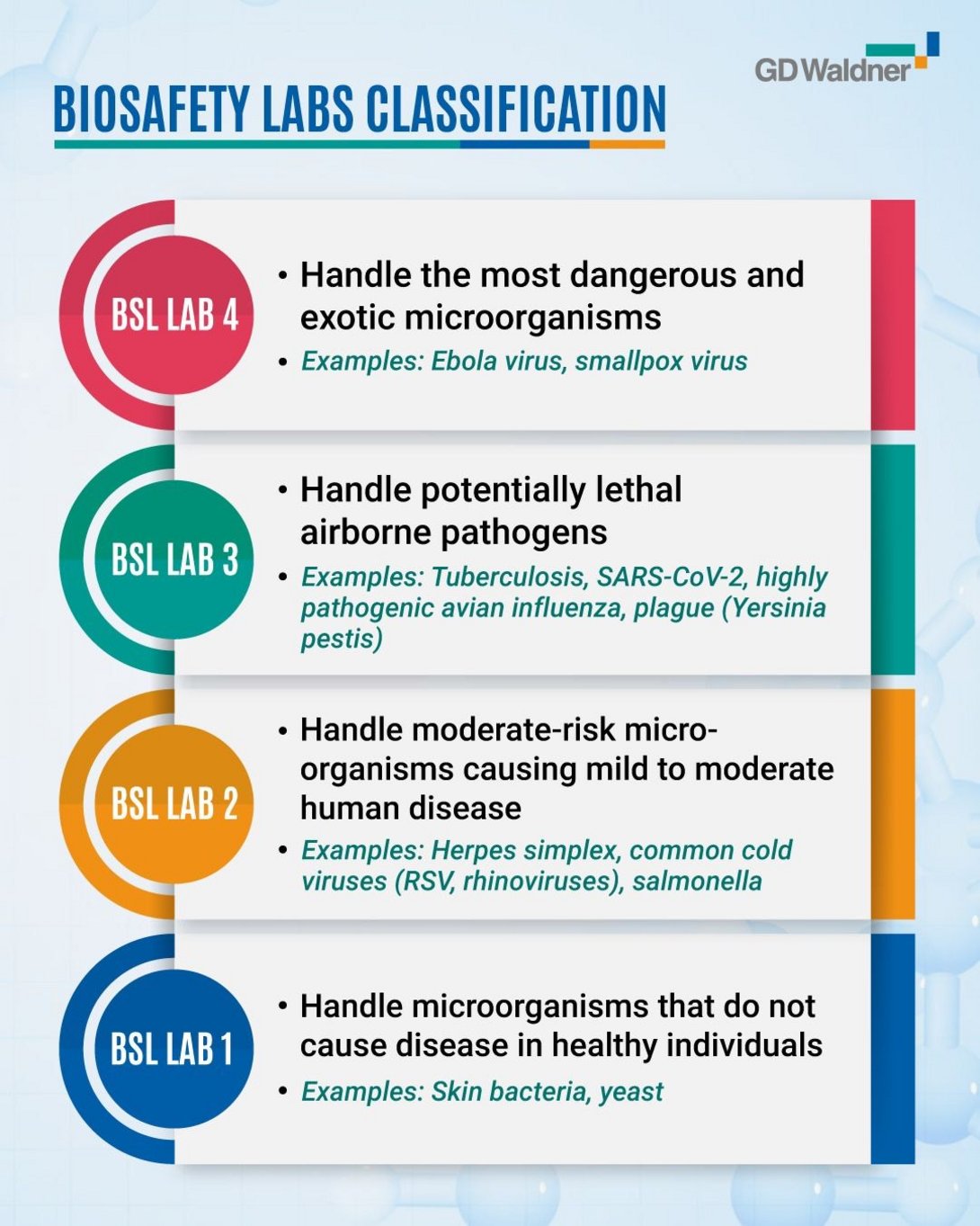BSL labs are designed to handle and conduct research on infectious agents that pose a risk to human health, animals, or the environment. These labs are designed with specific safety measures in place to prevent accidental exposure to dangerous pathogens or biological materials.
BSL-1:
BSL-1 labs are designed for the handling of biological agents that pose little to no threat to human health. Examples of agents that can be handled in a BSL-1 lab include non-pathogenic bacteria and viruses, as well as some plant and animal materials. The safety measures for BSL-1 labs are relatively basic, with simple requirements such as personal protective equipment (PPE), basic training, and limited access to the lab.
BSL-2:
BSL-2 labs are designed for the handling of biological agents that pose a moderate risk to human health. Examples of agents that can be handled in a BSL-2 lab include the hepatitis B virus, influenza virus, and Salmonella bacteria. In addition to the safety measures required for BSL-1 labs, BSL-2 labs require additional safety measures, such as the use of specialized equipment and facilities, and more extensive training for lab personnel. Access to the lab is also more restricted, and lab workers are required to wear more extensive PPE.
BSL-3:
BSL-3 labs are designed for the handling of biological agents that pose a serious risk to human health. Examples of agents that can be handled in a BSL-3 lab include the tuberculosis bacterium, the West Nile virus, and the SARS-CoV-2 virus. Safety measures required for BSL-3 labs are even more rigorous than for BSL-2 labs, including more specialized equipment, enhanced facility design, and more extensive training for lab personnel. Access to the lab is extremely limited, and lab workers are required to wear extensive PPE, including respirators.
BSL-4:
BSL-4 labs are designed for the handling of biological agents that pose the highest risk to human health. Examples of agents that can be handled in a BSL-4 lab include the Ebola virus, the Marburg virus, and the smallpox virus. BSL-4 labs have the most stringent safety measures of any laboratory, including advanced facilities and equipment, specialized ventilation systems, and multiple layers of protection to prevent any release of the biological agents. Access to the lab is strictly controlled, and lab personnel must undergo extensive training and wear the most advanced PPE available, including positive-pressure suits.

